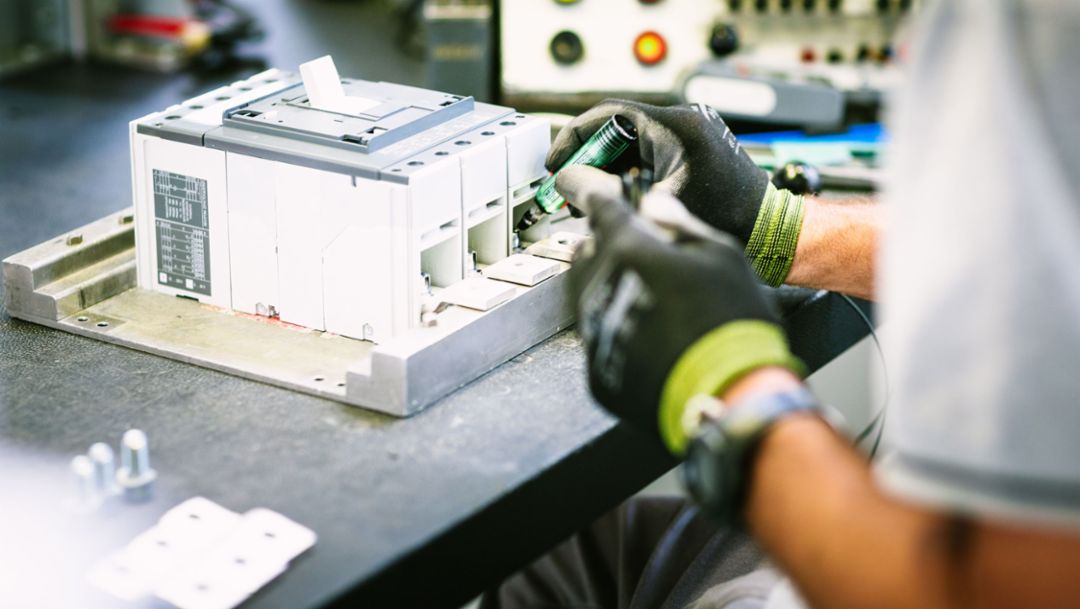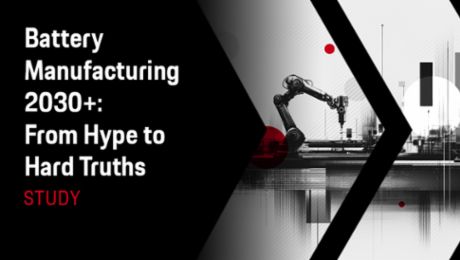Quality is measured in many ways, whether it is parts per million defects (PPM), “i.O.” (in Ordnung, meaning “in order”), or first pass yield (FPY). Getting it right the first time is the goal. This is certainly true of the global engineering company Asea Brown Boveri (ABB) and its plant in Frosinone, Italy, located some 100 kilometers south of Rome. Here, Andrea Menti is responsible for production at ABB’s Protection and Connection business unit in Southern Europe. The plant specializes in low-voltage breakers for automation and building utility systems. The site is part of ABB’s Electrification Products division, which employs 42,000 people worldwide and posted sales of around 10.6 billion dollars in 2014.
ABB’s technologies and products are used around the world to produce and distribute power, such as in transformers and network management systems. They are also used to automate industrial production, via electric drive systems and robots, for example. The 800 or so employees in Frosinone produce a broad
range – tens of thousands of versions – of low-voltage breakers. With every new model series, these products become more complex, as can be seen by the current generation of circuit breakers. These devices were originally designed as a reliable means of turning power circuits on and off in order to protect people, plants, and systems.
The market leader’s quality
However, ultra-modern circuit breakers like the Emax 2 series can also be used to manage power, or to monitor and limit energy consumption. And where connectivity is desired, customers can integrate them into a very wide array of automated systems. Both the growing complexity and the many variations of the products place high demands on quality. Each one of these circuit breakers and load-break switches has to work perfectly, because they are integrated into sophisticated and often highly automated plants and building utility systems.
ABB’s position in the market in terms of quality is well established. Andrea Menti says quite simply: “We are the leaders in the market in innovation and quality.” ABB intends to further extend its technological lead by embedding more and more intelligence and functionality inside its electrical products. As energy management becomes more important and the way that companies work becomes more connected, demand for smarter solutions continues to grow. To achieve its aim, ABB is also looking beyond its own company.
As Menti explains, “Our goal was to continue to raise our quality to a new level and to learn from other industries that are also quality-controlled. The automotive industry has a strong reputation for quality management.” As a result, we decided to join forces with Porsche Consulting. “For ABB, Porsche has been an excellent benchmark of quality,” he notes.
Expanding horizons
The project leaders started by defining different areas and tasks needed to optimize quality. Giovanni Puglisi, Senior Project Manager at Porsche Consulting Srl. in Milan, who is responsible for the consulting work, describes it: “We didn’t just concentrate on production at ABB. We considered it equally important to examine each of the suppliers, the product reation process, and customer service. And in every case, the crucial factor was employee involvement. If you want to manage change, you have to invest enough time and commitment in communications. And so we deliberately set up teams of employees representing all different competence areas, including blue-collar workers.”
As many as thirty staff members from Frosinone and the development center in Bergamo worked on the individual projects full time. At the “shop floor” level, project work with Porsche Consulting has led to results such as optimized material flow and tighter processes. “We defined pilot areas for every project,” says Puglisi. “That enabled us to optimize processes in small, very transparent stages.” This approach is more effective, and successful results are quickly visible. The performance indicators were higher first pass yield rates and lower return rates. Once the pilot projects were put successfully into place, the relevant ABB teams were able to roll them out to other areas of the site on their own.
The same tools for all
The second step brought suppliers into the process, because they contribute significantly to value and therefore to the quality of the end products. As Menti explains, “Our teams put the tools that we acquired with Porsche Consulting to work in six-week projects – for our suppliers as well – not only to attain higher levels of quality but also to improve productivity. At the same time, we are now integrating the suppliers more closely into our development work.”
Menti emphasizes that the projects are not yet finished. “We view the entire process more like a journey we’re on than a project that will be completed at some point.” The timeline for the Italian sites extends until 2017. By then the teams from ABB and Porsche Consulting will have also optimized the product development and customer service departments with an eye to quality. They are using methods that have already been tested in automobile production at Porsche, and that Porsche Consulting has successfully transferred to other branches of the industry.
From Italy to China
One of these methods is the Q6 model for managing operational quality. Its six principles include improving the quality gates between successive steps, and ensuring that problem-solving processes are transparent. Another method that has proven itself at Porsche is “POLE,” which is the German acronym for optimizing processes by integrating suppliers. In the future, the development processes for ABB’s smart circuit breakers and switches will benefit from Porsche’s experience in developing cars as well.
These pilot projects in Frosinone and Bergamo are simultaneously being transferred to other factories in the business unit. “We are rolling out the quality improvement process worldwide,” reports Menti. “We’ve already put our first pilot project based on the Frosinone model into practice in China, and the next plant in line is in Finland. As the largest production plant, Frosinone is the pilot for all of the other sites, and we are training people to apply the projects at other plants.”
On the right path
Can ABB already list the results of its optimization work? “Not yet,” says Andrea Menti, but he elaborates: “It’s too early for figures – we’re still in the midst of the project. But the number of returns, which was already very low, has gone down significantly even more. So we’re convinced that we’re on the right path.”
Info
Text first published in „Porsche Consulting - THE MAGAZINE", Issue 17
Author: Gerald Scheffels // Photos: Franco Calegari





